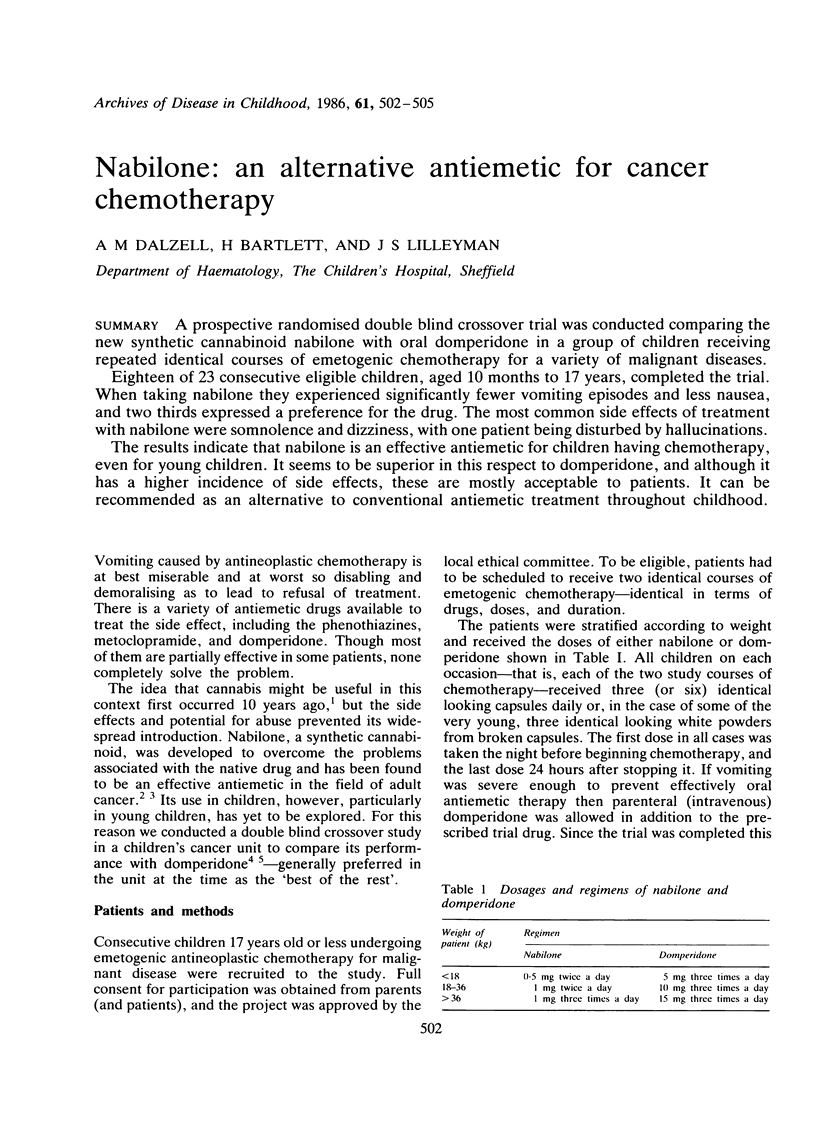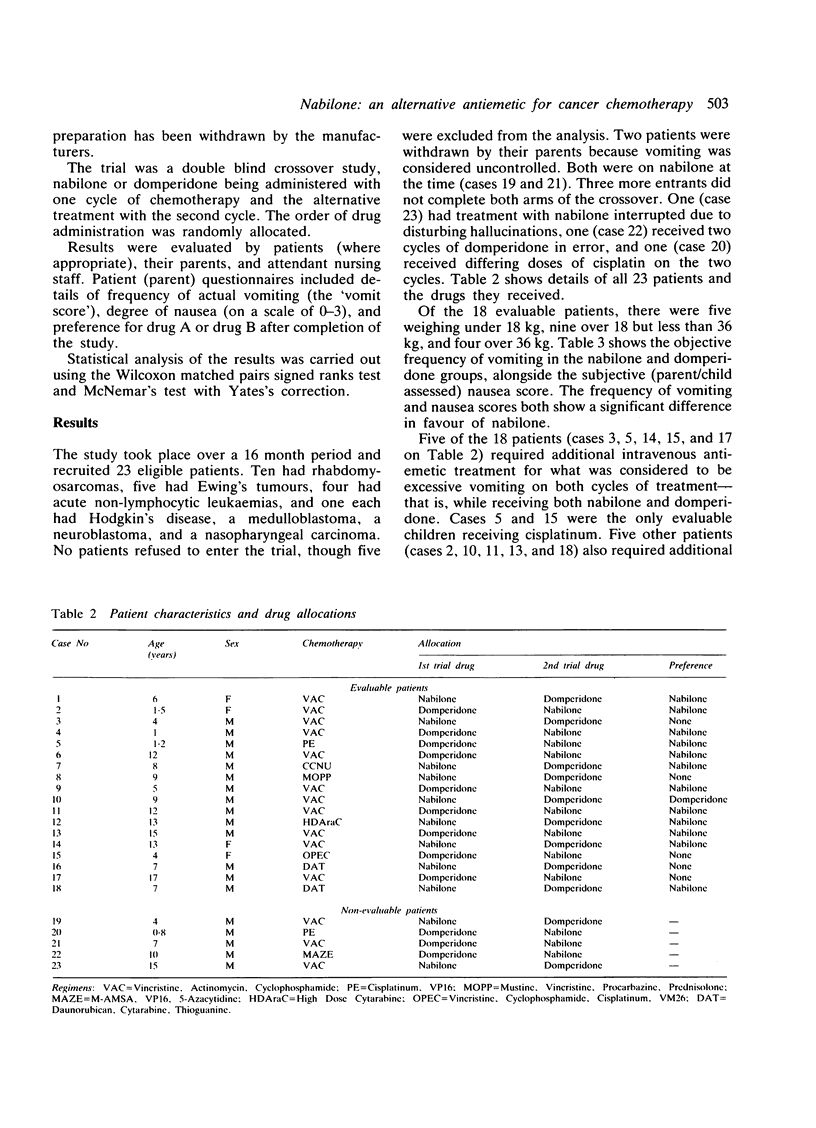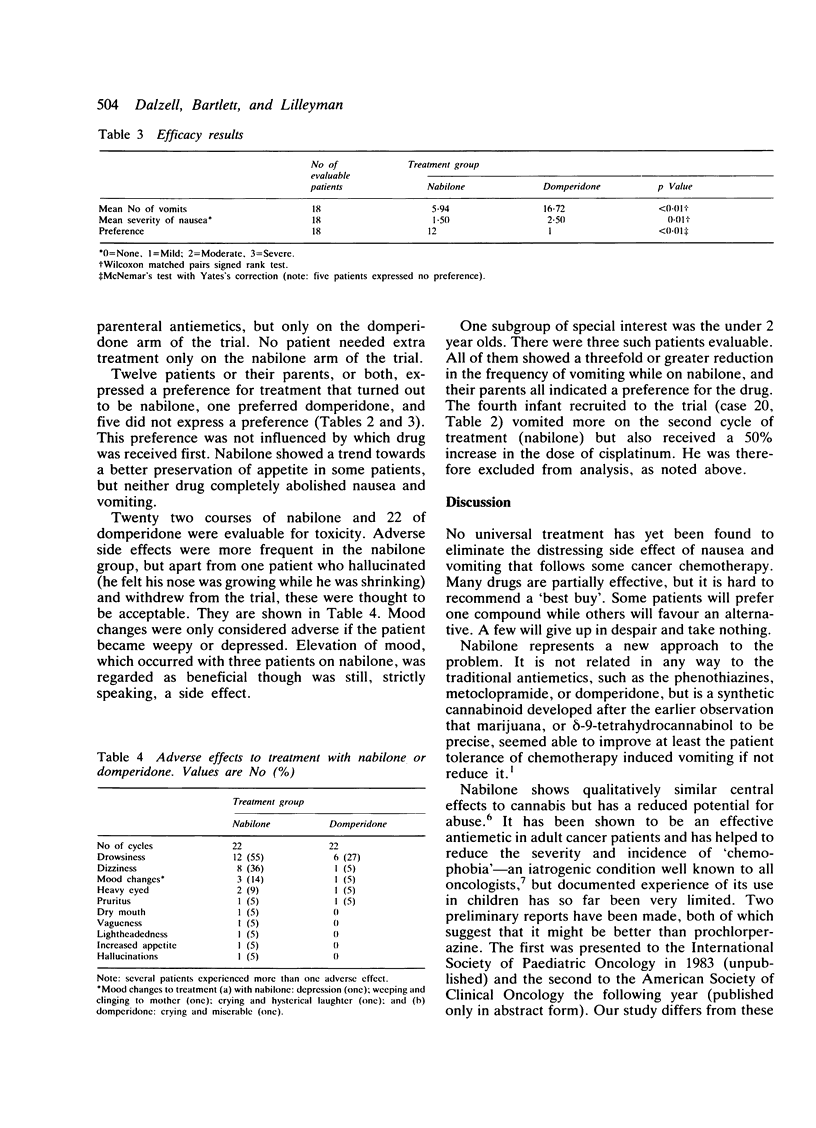Abstract
A prospective randomised double blind crossover trial was conducted comparing the new synthetic cannabinoid nabilone with oral domperidone in a group of children receiving repeated identical courses of emetogenic chemotherapy for a variety of malignant diseases. Eighteen of 23 consecutive eligible children, aged 10 months to 17 years, completed the trial. When taking nabilone they experienced significantly fewer vomiting episodes and less nausea, and two thirds expressed a preference for the drug. The most common side effects of treatment with nabilone were somnolence and dizziness, with one patient being disturbed by hallucinations. The results indicate that nabilone is an effective antiemetic for children having chemotherapy, even for young children. It seems to be superior in this respect to domperidone, and although it has a higher incidence of side effects, these are mostly acceptable to patients. It can be recommended as an alternative to conventional antiemetic treatment throughout childhood.
Full text
PDF



Selected References
These references are in PubMed. This may not be the complete list of references from this article.
- Einhorn L. Nabilone: an effective antiemetic agent in patients receiving cancer chemotherapy. Cancer Treat Rev. 1982 Dec;9 (Suppl B):55–61. doi: 10.1016/s0305-7372(82)80037-6. [DOI] [PubMed] [Google Scholar]
- Herman T. S., Einhorn L. H., Jones S. E., Nagy C., Chester A. B., Dean J. C., Furnas B., Williams S. D., Leigh S. A., Dorr R. T. Superiority of nabilone over prochlorperazine as an antiemetic in patients receiving cancer chemotherapy. N Engl J Med. 1979 Jun 7;300(23):1295–1297. doi: 10.1056/NEJM197906073002302. [DOI] [PubMed] [Google Scholar]
- Lemberger L., Rubin A., Wolen R., DeSante K., Rowe H., Forney R., Pence P. Pharmacokinetics, metabolism and drug-abuse potential of nabilone. Cancer Treat Rev. 1982 Dec;9 (Suppl B):17–23. doi: 10.1016/s0305-7372(82)80031-5. [DOI] [PubMed] [Google Scholar]
- Morrow G. R. Prevalence and correlates of anticipatory nausea and vomiting in chemotherapy patients. J Natl Cancer Inst. 1982 Apr;68(4):585–588. [PubMed] [Google Scholar]
- O'Meara A., Mott M. G. Domperidone as an antiemetic in paediatric oncology. Cancer Chemother Pharmacol. 1981;6(2):147–149. doi: 10.1007/BF00262334. [DOI] [PubMed] [Google Scholar]
- Sallan S. E., Zinberg N. E., Frei E., 3rd Antiemetic effect of delta-9-tetrahydrocannabinol in patients receiving cancer chemotherapy. N Engl J Med. 1975 Oct 16;293(16):795–797. doi: 10.1056/NEJM197510162931603. [DOI] [PubMed] [Google Scholar]
- Swann I. L., Thompson E. N., Qureshi K. Domperidone or metoclopramide in preventing chemotherapeutically induced nausea and vomiting. Br Med J. 1979 Nov 10;2(6199):1188–1188. doi: 10.1136/bmj.2.6199.1188. [DOI] [PMC free article] [PubMed] [Google Scholar]


